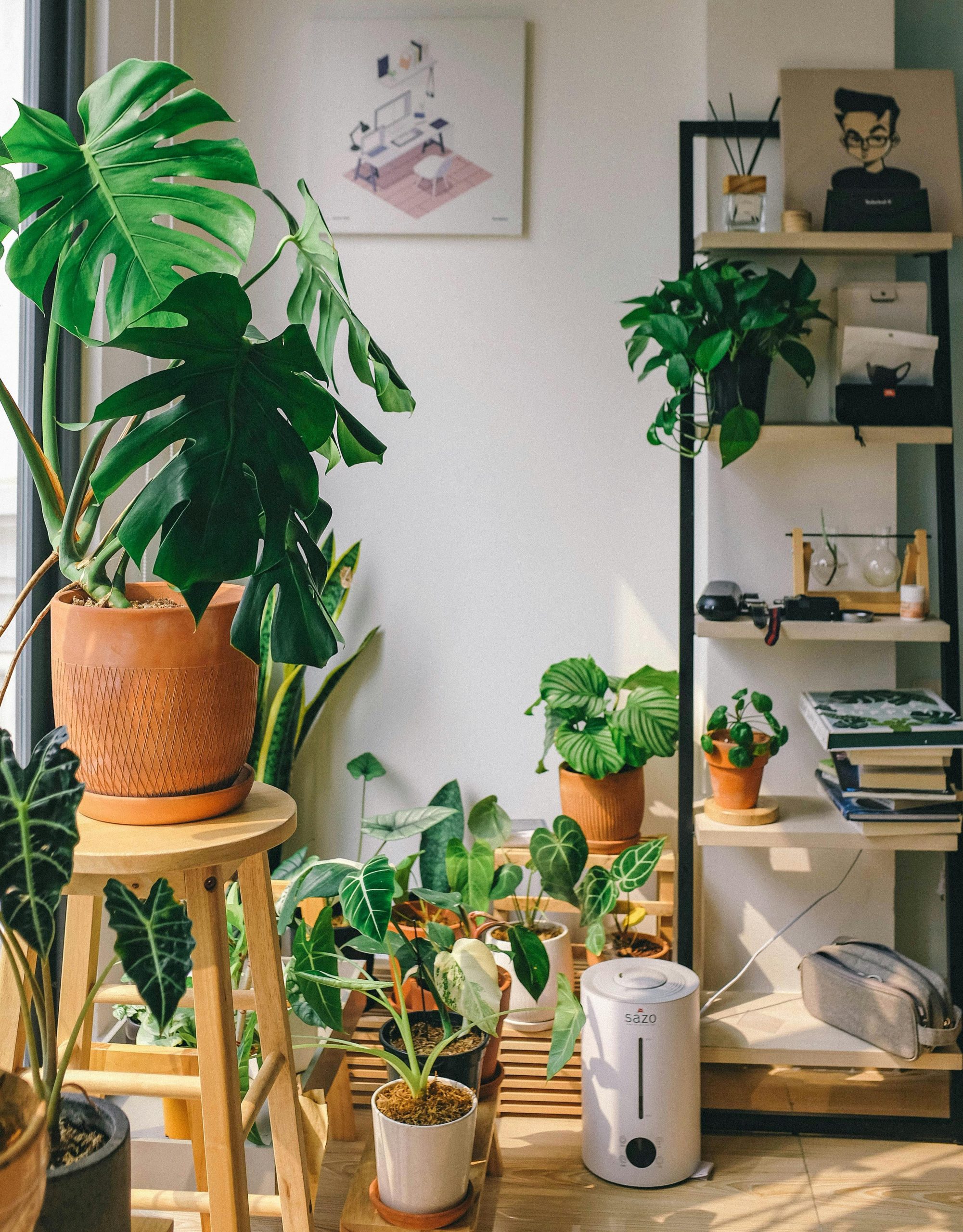In today’s world, where indoor air pollution is a growing concern, incorporating air-purifying plants into your home can be a natural and aesthetically pleasing solution. Many common houseplants are scientifically proven to filter harmful toxins like formaldehyde, benzene, and ammonia from the air, improving both air quality and overall well-being. Whether you’re a seasoned plant parent or a beginner, these green companions can transform your living space into a healthier, fresher environment.
Why Choose Air-Purifying Indoor Plants?
Indoor air pollution is often worse than outdoor air due to trapped chemicals from cleaning products, furniture, and synthetic materials. NASA’s Clean Air Study found that certain plants can remove up to 87% of airborne toxins within 24 hours. Beyond air purification, indoor plants offer additional benefits:
- Boost mood and productivity – Greenery reduces stress and enhances focus.
- Increase humidity – Plants release moisture, helping combat dry indoor air.
- Enhance décor – They add natural beauty to any room.
By choosing the right plants, you can create a healthier home without relying on artificial air purifiers.
Top Air-Purifying Indoor Plants
Here are some of the best plants for naturally cleaning your home’s air:
1. Snake Plant (Sansevieria)
Also known as Mother-in-Law’s Tongue, the Snake Plant is a hardy, low-maintenance option. It excels at removing formaldehyde, xylene, and toluene—common toxins found in cleaning products and paints. Unlike most plants, it releases oxygen at night, making it ideal for bedrooms.
- Care tips: Thrives in low light and requires minimal watering.
2. Spider Plant (Chlorophytum comosum)
This resilient plant is perfect for beginners. It effectively removes carbon monoxide, formaldehyde, and xylene. Its arching leaves and baby spiderettes add a playful touch to any space.
- Care tips: Prefers bright, indirect light and well-draining soil.
3. Peace Lily (Spathiphyllum)
With its elegant white blooms, the Peace Lily is a powerful air purifier that combats ammonia, benzene, and formaldehyde. It also helps reduce mold spores, making it great for bathrooms and kitchens.
- Care tips: Keep soil moist and place in low to medium light.
4. Aloe Vera
Known for its healing properties, Aloe Vera also filters formaldehyde and benzene. Its succulent leaves store water, making it drought-tolerant and easy to care for.
- Care tips: Needs bright, indirect sunlight and infrequent watering.
5. Boston Fern (Nephrolepis exaltata)
This lush fern is excellent at removing formaldehyde and xylene while adding humidity to dry indoor air. Its feathery fronds make it a beautiful hanging plant.
- Care tips: Prefers high humidity and consistent moisture.
How to Maximize Air Purification
To get the most out of your air-purifying plants, follow these tips:
- Place plants strategically – Position them in areas with high pollutant exposure, like near furniture, printers, or kitchens.
- Group plants together – Clustering plants enhances their air-cleaning efficiency.
- Keep leaves clean – Dust can block pores; wipe leaves gently with a damp cloth.
- Ensure proper care – Healthy plants purify air better, so water and fertilize as needed.
Remember, while plants help, they should complement other air-quality practices like proper ventilation and reducing chemical use.
Common Mistakes to Avoid
Even the easiest plants can suffer from neglect or improper care. Avoid these pitfalls:
- Overwatering – Most air-purifying plants prefer slightly dry soil. Check moisture levels before watering.
- Ignoring light needs – While some plants tolerate low light, others need bright, indirect sunlight.
- Using toxic pesticides – Opt for natural pest control to maintain a chemical-free home.
- Choosing the wrong plant for your space – Consider room size, humidity, and sunlight before buying.
By selecting the right plants and caring for them properly, you can enjoy cleaner air and a greener, healthier home. Start with one or two easy-to-care-for varieties and gradually expand your indoor garden. Not only will your air quality improve, but your space will also feel more vibrant and alive. Embrace nature’s air purifiers and breathe easier every day.


